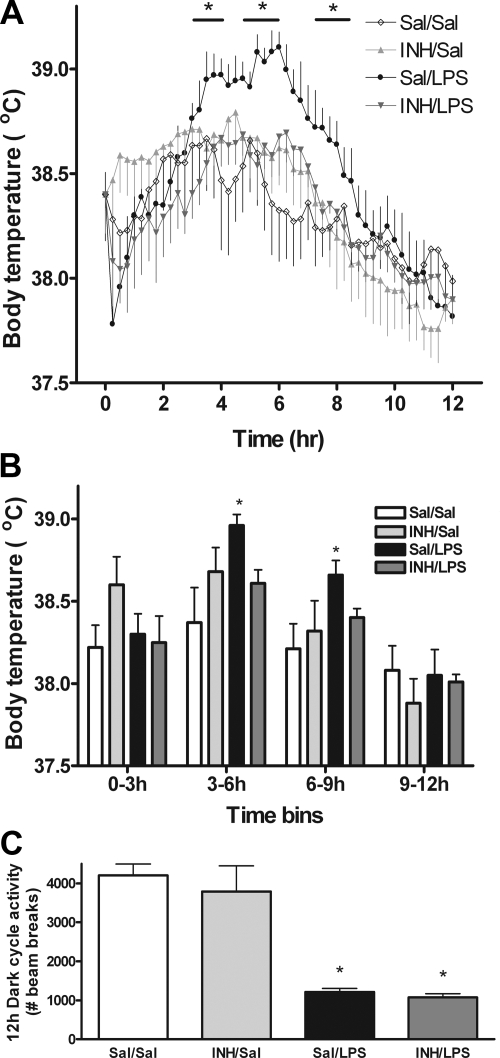Figure 5.
Role of aPKC activity in body temperature and locomotor responses to systemic LPS. 3V-cannulated rats bearing temperature transponders (n = 6/group) were treated with icv saline (Sal) or INH (2 nmol) followed by ip saline or LPS (100 μg/kg) 1 h before the onset of the dark cycle (time = 0 h). A, Temperature traces were obtained via continuous monitoring until the end of the dark cycle (time = 12 h). Data points have been averaged to 15-min intervals for clarity. *, P < 0.05 compared with all other treatments for duration of time points covered by bar above Sal/LPS condition. B, Integration of the continuous temperature information in A using 3-h bins. *, P < 0.05 compared with other conditions. C, Animals treated as above were simultaneously monitored for ambulatory activity by measuring laser beam breaks within the cage. Bars represent summation of beam breaks over the entire 12-h dark cycle. *, P < 0.05 relative to Sal/Sal.

